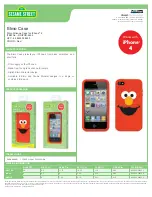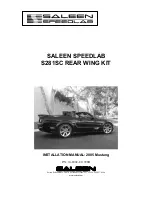
11
XCHARGEIN MOBILITY USER MANUAL
MN191006EN March 2021 www.eaton.com
7. Maintenance
Installation, commissioning, maintenance or retrofitting of the charging station must be performed by qualified
and authorized electricians who are responsible for complying with existing standards and local installation
regulations.
Before making any changes or alterations to the EV charger, make sure that the external AC line main switch
is disconnected, and circuit breakers are open.
Any operation requiring the opening of the housing of the charging station can lead to electric shock hazards.
The opening of the charger as well as any configuration changes must be carried out by a qualified electrician
in accordance with the local safety and electrical regulations and laws.
7.1 Station updates
It is mandatory to install and maintain units with the latest system update to enable new features and
bug fixes or the guarantee conditions may be voided. For units that are online, this must be done via the
appropriate software platform. Please refer to the appropriate software manual, available on www.eaton.com,
for further details. For units that are offline please contact your Eaton service representative.
7.2 Disposal
When xChargeIn Mobility reaches the end of its service life, the end user should contact a professional installer for
disposal instructions.Please refer to www.eaton.com/recycling for further details.
The EU Directive on Waste Electrical and Electronic Equipment (WEEE) (Directive 2012/19/EU) establishes
common rules on the management of electrical and electronic equipment and minimize its impact — from
design until disposal — on the environment. As a manufacturer of electrical and electronic equipment, Eaton
actively supports the requirements of the WEEE Directive.
In compliance with the EU standard EN 50419 for marking of electrical and electronic equipment, we include
the crossed-out wheeled bin symbol on our products. This symbol alerts users that these products should be
recycled in accordance with local environmental regulations and not discarded with household waste. When
end-users recycle WEEE they are helping to ensure that they are neither incinerated nor sent to landfills,
minimizing potential negative impact on human health and the environment.
Any device that is no longer needed must therefore be returned to the distributor or disposed to an authorized
collection and recycling center in the area. Eaton encourages all its customers and end users to make
responsible decisions when it comes to disposing products.
Eaton is not responsible for the logistical transportation from the end-user’s house to the recycling center.































